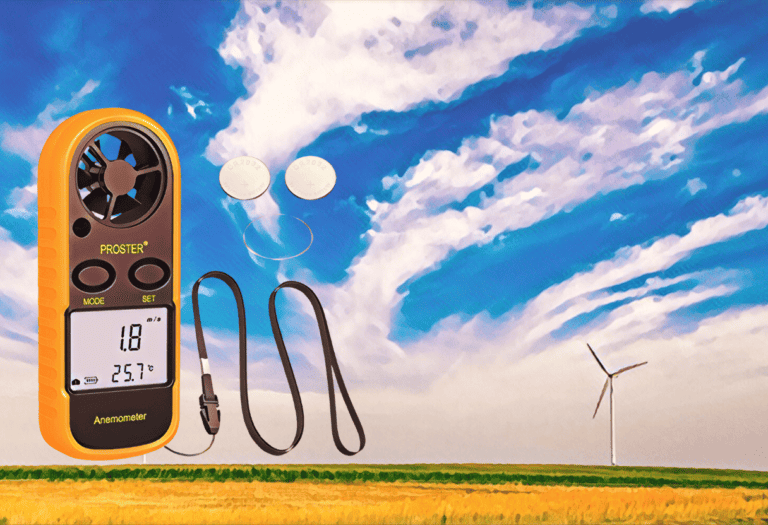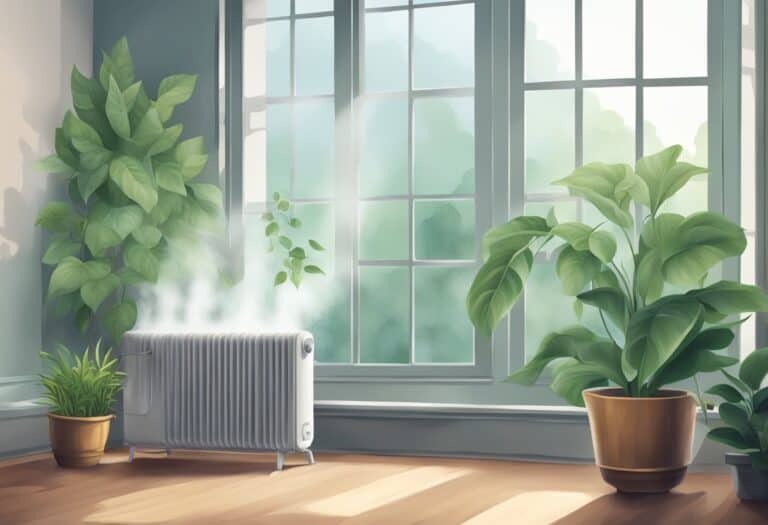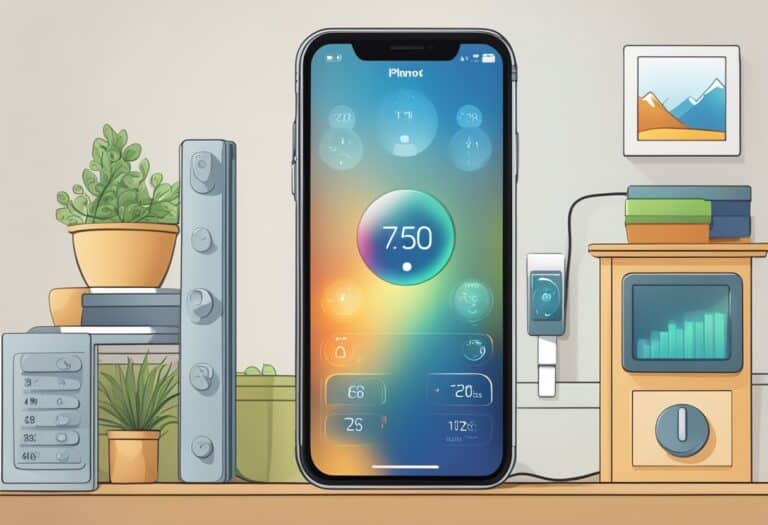Humidity is a measure of the water vapor present in the air, reflecting the amount of moisture surrounding us.
Often expressed as a percentage, this value is known as relative humidity. It provides an understanding of how saturated the air is with water vapor—the higher the percentage, the more moisture the air contains. High humidity typically signifies that the air holds a large percentage of the possible maximum amount of water vapor it can at a particular temperature before condensation occurs.
The effects of humidity are palpable in both comfort and health, as air with high humidity can make temperatures feel warmer than they actually are due to the body’s impaired ability to cool itself through sweat. Conversely, low humidity can lead to dry skin and respiratory discomfort.
Understanding the significance of relative humidity percentages is crucial for gauging indoor air quality and making necessary adjustments for personal well-being.
Humidity measures water vapor in air, affecting comfort and health. High humidity (>60%) feels muggy, while low humidity dries skin and airways. Aim for 30-50% humidity for comfort and health.
Understanding Humidity and its Measurement
Humidity is a measure of the water vapor content in the air, which affects your comfort and the environment around you. To grasp its impact, you need to understand its relationship with temperature and the tools used for its measurement.
Role of Temperature in Humidity
Temperature plays a fundamental role in humidity. Warm air can hold more water vapor before becoming saturated. When air reaches saturation, evaporation rates equal condensation rates, and dew point—the temperature at which air is fully saturated—has been reached. The warmer the air, the higher its capacity for holding water vapor.
Relative vs Absolute Humidity
There are two terms you should be familiar with: relative humidity and absolute humidity. Relative humidity is a percentage value representing the current moisture content relative to the maximum moisture content that air can hold at a given temperature. In contrast, absolute humidity measures the actual amount of water vapor in the air, regardless of temperature, usually expressed in grams per cubic meter.
- Relative Humidity (RH): Indicates the likelihood of precipitation, dew, or fog. High RH can lead to discomfort and various weather phenomena.
- Absolute Humidity (AH): Indicates the actual water content in the air and is useful in calculations for drying and heating processes.
Measuring Humidity with Hygrometers
To measure humidity, you use an instrument called a hygrometer. There are various types of hygrometers, including mechanical and electronic ones. These devices can provide a humidity percentage, showing you how close the air is to being saturated. Keeping an eye on this percentage can help you understand and predict weather changes, potential allergen levels, and how ambient conditions could affect materials and health.
Health and Comfort Factors
When discussing humidity percentage, it’s essential to understand how it influences your comfort and health. High humidity levels can lead to discomfort and various health issues, while proper management of indoor humidity contributes to a more comfortable and healthier environment.
The Effect of Humidity on Human Comfort
Humidity plays a pivotal role in how comfortable you feel in your environment. When humidity levels are high, your body’s natural cooling mechanism, sweat, becomes less effective. This can lead to feelings of stickiness and overheating, which many find uncomfortable. In contrast, comfortable humidity levels can enhance thermal comfort, allowing your sweat to evaporate and cool your body efficiently.
Humidity’s Impact on Health and Indoor Air Quality
Humidity levels also have a significant impact on your health and the quality of the air inside your home. High indoor humidity can encourage the growth of mold and increase the presence of allergens, which can exacerbate respiratory conditions. Conversely, too low humidity can irritate your skin and respiratory system. Ventilation systems, paired with devices like humidifiers and dehumidifiers, can help maintain optimal humidity levels to support good health and indoor air quality.
Optimizing Indoor Humidity Levels
To maintain a comfortable and healthy home environment, aim for an indoor humidity level between 30-50%. This range helps minimize issues related to high humidity, like mold growth and allergen proliferation, while avoiding the discomfort of overly dry air. Regular use of a humidifier or dehumidifier can help you achieve and maintain these ideal humidity conditions.
Environmental and Seasonal Influence

Your understanding of humidity percentages is incomplete without considering the environmental and seasonal factors that can influence it substantially. From the warmth of summer air to the chill of cold ones, these factors play crucial roles in shaping local humidity levels.
Humidity in Different Climates
Warm air can hold more moisture than cold air, leading to significant disparities in humidity between different climates. If you’re near large bodies of water, like lakes or oceans, expect higher humidity due to increased evaporation. Areas close to the Gulf of Mexico, for instance, often experience high humidity percentages. Conversely, regions further from water bodies might witness drier conditions.
- Summer Months: With warmer air and more sunlight, evaporation rates increase, raising humidity levels.
- Proximity to Water Bodies: Coastal locations or areas near water bodies often have higher ambient humidity due to ongoing water evaporation and condensation cycles.
Seasonal Variations in Humidity
During the summer months, high temperatures cause higher evaporation rates, leading to more moisture in the atmosphere, which creates a sensation of sticky or muggy weather. This is when you might notice more fog and clouds, both products of condensation when warm, moist air cools.
- Winter: Lower saturation vapor pressure means colder air doesn’t hold moisture well, often leading to drier conditions than you’d find in the summer.
- Precipitation: Influenced by the seasons, regions may see different forms of precipitation. Summer could bring about heavy rainfall, while colder seasons see less due to the reduced capacity of cold air to hold moisture.
Seasons dictate not only the temperature but also the humidity percentage you experience. Whether it’s the damp air of a misty coast or the arid breeze of a desert plain, the time of year and the place you are in pivotally determine the level of humidity around you.
Frequently Asked Questions
Understanding humidity is crucial as it affects your comfort and the perception of temperature. These FAQs address common questions regarding humidity levels and their implications.
What defines a high humidity level in general?
A high humidity level typically refers to a relative humidity above 60%. This measurement indicates a significant amount of moisture in the air, which can lead to various weather-related phenomena and affect individual comfort and health.
Does a high relative humidity indicate hotter temperatures?
While high relative humidity doesn’t inherently indicate hotter temperatures, it can make the air feel warmer because your body is less efficient at cooling itself through evaporation when the air is saturated with moisture.
Can high humidity levels be associated with cold weather conditions?
Yes, high humidity levels can occur in cold weather. It’s the relative measure of water vapor in the air compared to the total amount the air can hold at that temperature, so cold air saturated with moisture can have a high relative humidity.
At what point does humidity become generally uncomfortable for people?
Humidity becomes generally uncomfortable for most people when it exceeds 60-65% relative humidity. At this level, the air feels sticky, and sweat does not evaporate as quickly, making it more difficult to cool down.
How is humidity percentage interpreted in weather reports?
In weather reports, humidity percentage refers to relative humidity, which is the amount of moisture in the air compared to what the air can hold at that temperature. It provides an indication of the likelihood of precipitation, dew, or fog.
What are the implications of very low humidity on temperature perception?
Very low humidity can make temperatures feel cooler than they actually are because dry air allows sweat to evaporate more easily, enhancing the body’s natural cooling process. However, it can also dry out your skin and respiratory system.







